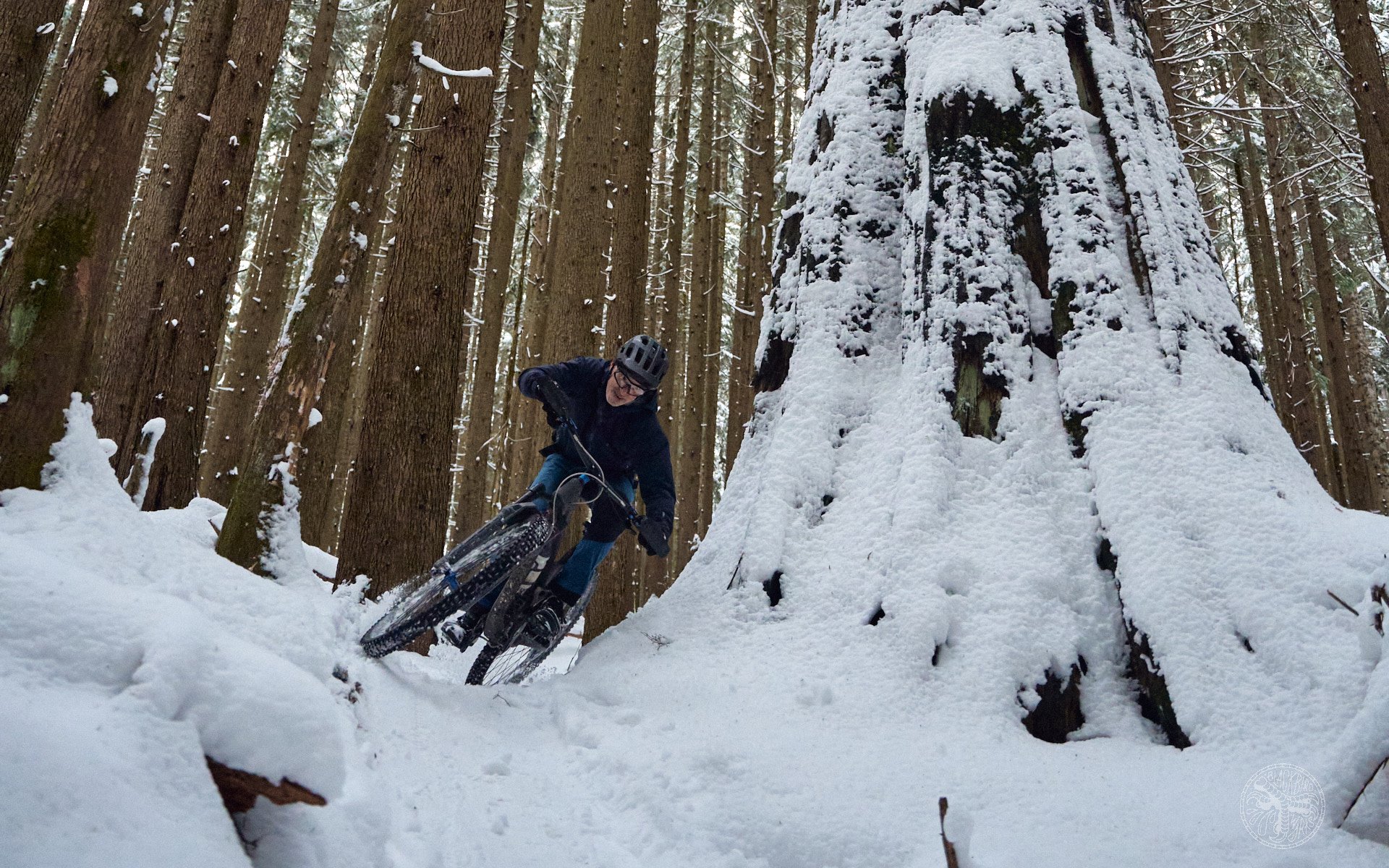
REVIEW
Hope Tech 4 E4 Brakes
I wanted one more ride before I finalized this review, and the weather was decent; a little wet but a relatively warm 6º celsius when we dropped in. The trails were in good shape, thanks to our local trail gods and goddesses, and snow free. The problem was the rider. I hadn't ridden since before Xmas and after 10 days, the flu was still infesting my head, lungs and throat.
I was nervous and tight as we dropped in but determined to confirm my impressions and wring a little more info out of Hope's Tech 4 E4 brakes. It sort of worked out, and yet it didn't. The problem is, these brakes do everything I ask of them so intuitively and so seamlessly, I generally forget they are there.
Whether it's feathering into a low grip situation where speed control without wheel slip is essential, or panic-stopping to avoid a fallen buddy, it's all incredibly easy. It feels as though the levers are an extension of my hand. On a day when I should have ridden as poorly as I felt, I managed quite well indeed, and much of the thanks, particularly for the earlier and steeper trails, should be postmarked for; Barnoldswick, U.K.
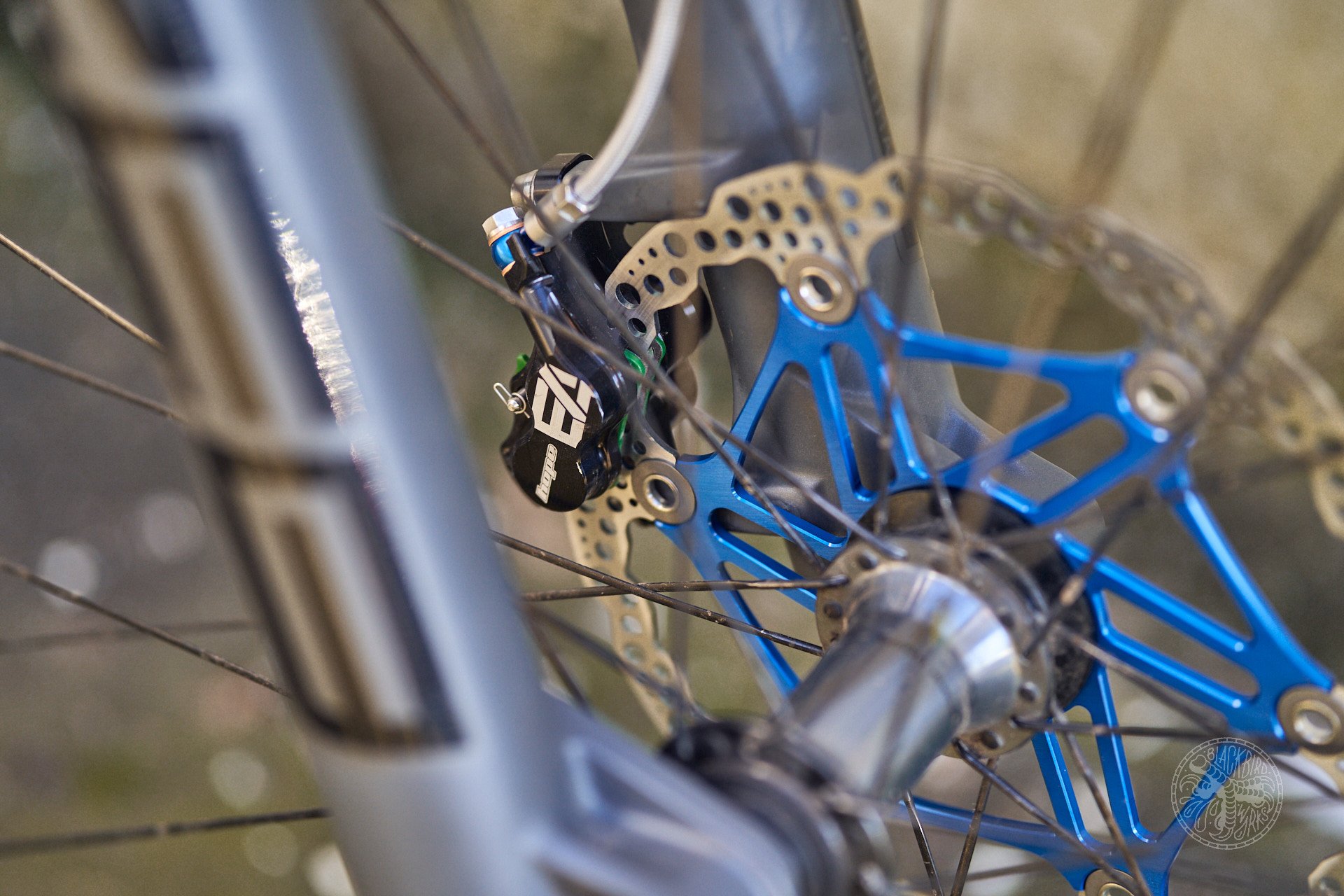
Pretty Brakes.
===
Sidebar:
I have to confess the photo is a mock-up. The Hope rotor wasn't compatible with the centre-lock XTR hub and six-bolt adapter because it ended up aligned too far outboard and couldn't be centred. I wanted to use the We Are One Faction rims I've been riding since 2019 but I had to swap out the XTR rear hub as well to fit the We Are One Arrival's 157 mm rear dropouts. It used to be that you'd replace rims and keep using hubs but carbon rims may have changed that. Thanks to Obsession: Bikes for the excellent builds.
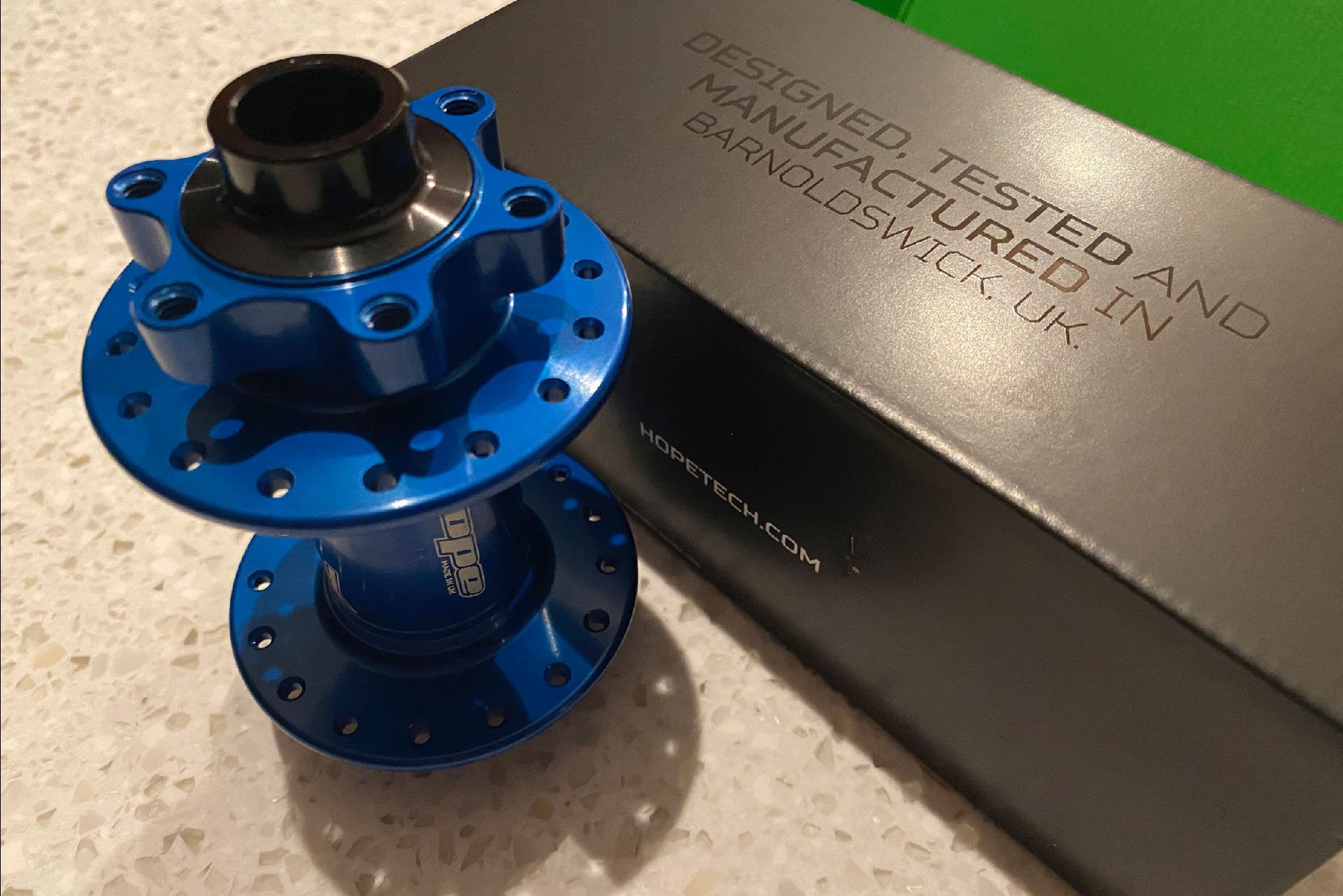
Why not have the hub match the drapes... er - brakes.
Braking Priorities
I should talk a little about what I look for in brakes because it might be different from what you are after. My priorities, in loose order, are power, modulation, lever action, and resistance to heat-induced performance reduction. Obviously ease of bleeding, aesthetics and quality of construction and design come in to play as well, but those generally follow along with top performing products.
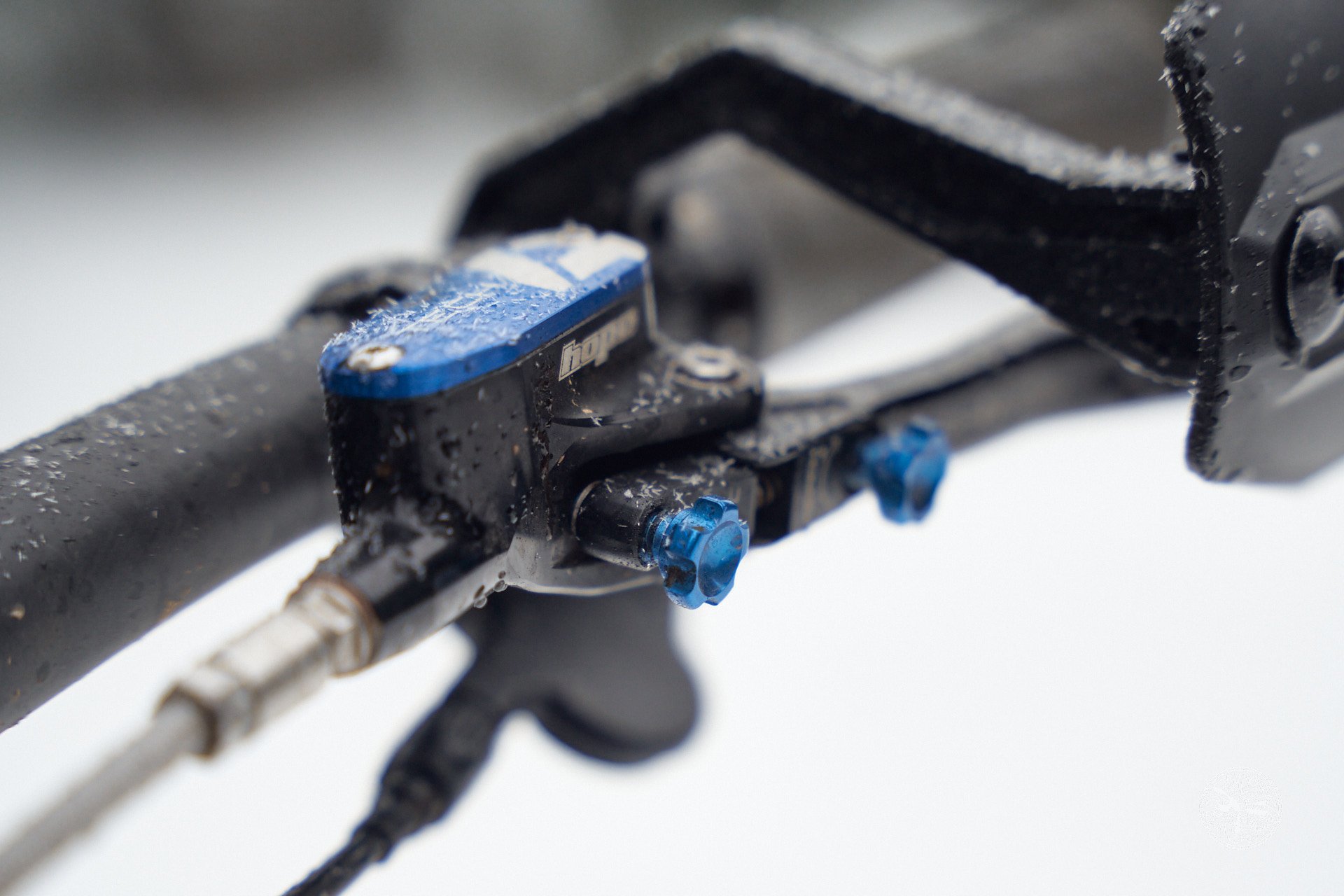
Obviously this Tech 4 E4 lever would look better without the Nock hand guards but... pretty snow crystals!
Modulation
The ability to control the application of power, AKA modulation, is very important for the riding we do around here because of the often-wet weather, the varied trail surfaces of dirt, rock, and wood, and the steep terrain. My ham-fisted definition of modulation is; the ability to add or subtract braking force by tiny increments to reach the optimal amount of force required for the circumstance and the rider.
We are often riding in situations where any front wheel slippage, particularly at low speed, could mean disaster. This might be creeping along a piece of off camber granite in order to set up for a rock face, riding a ladder bridge on a cold wet day, or controlling speed in a steep chute with a tricky sniper exit. In other areas, with better weather, trails with less jank and steepness and more flow, modulation is less critical. On a high speed flow trail you are generally on your brakes or off them, and speed provides its own modulation. The easiest way to think about modulation for me is to recall what it's like riding on contaminated rotors that howl, grab and vibrate. In these instances there is very little modulation; the brakes are either on or off.
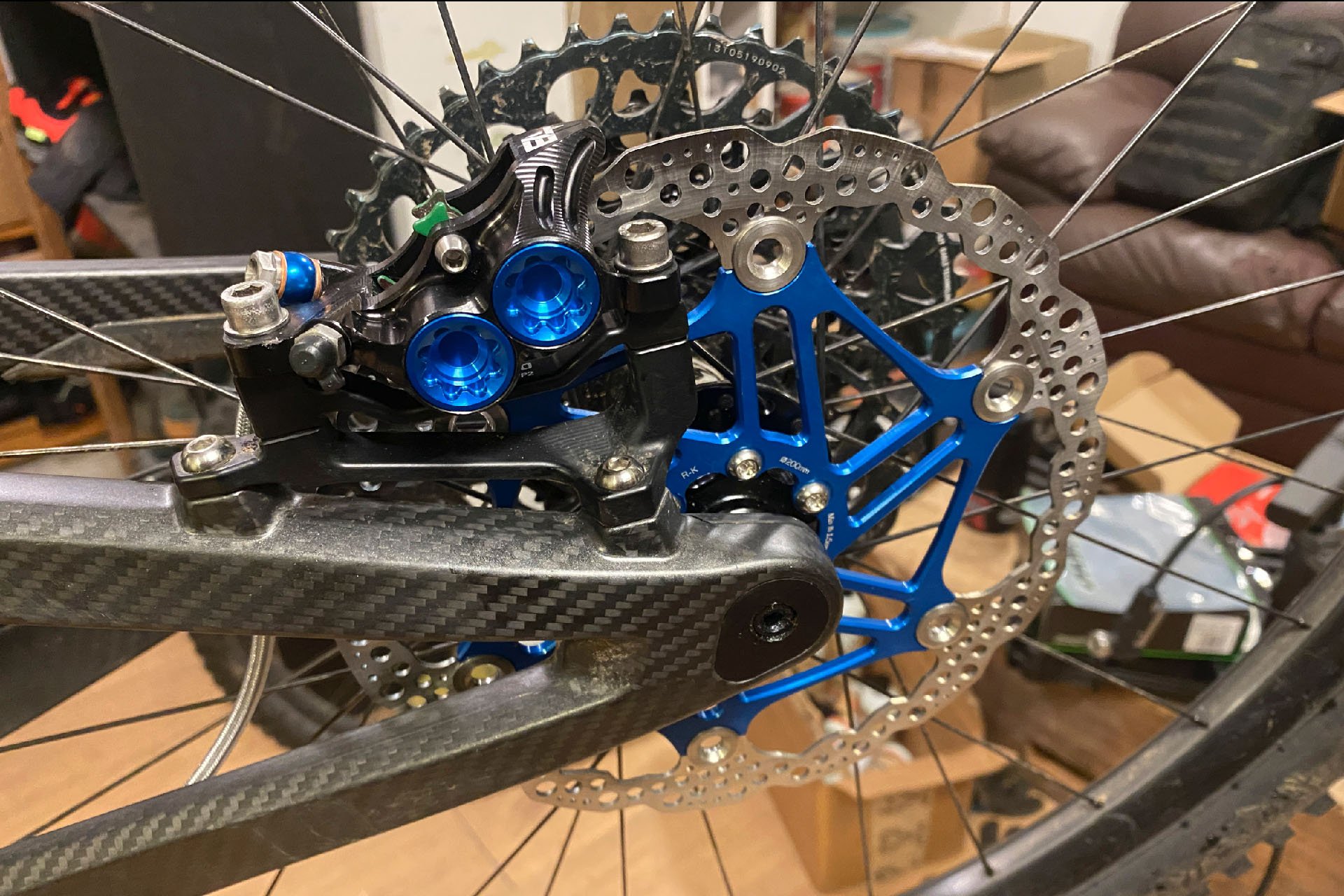
I couldn't help but take a few photos right after they were mounted. The bleed process, with Hope's Easy Bleed kit, was so easy I was sure I'd forgotten something.
Power
I ranked this first because without enough power, modulation will be of less help, and you'll be squeezing the levers so hard your hands will be useless regardless. A brake manufacturer calculates the clamping force at the rotor, but in practice the force you are able to generate will depend upon your weight, (more weight has a positive impact in terms of downforce but also negative because there is more mass to slow down) tire pressure, rubber compound, as well as knob height, shape and pattern and the trail surface.*
*I've been told by one large tire manufacturer that knob shape makes very little difference to lab results
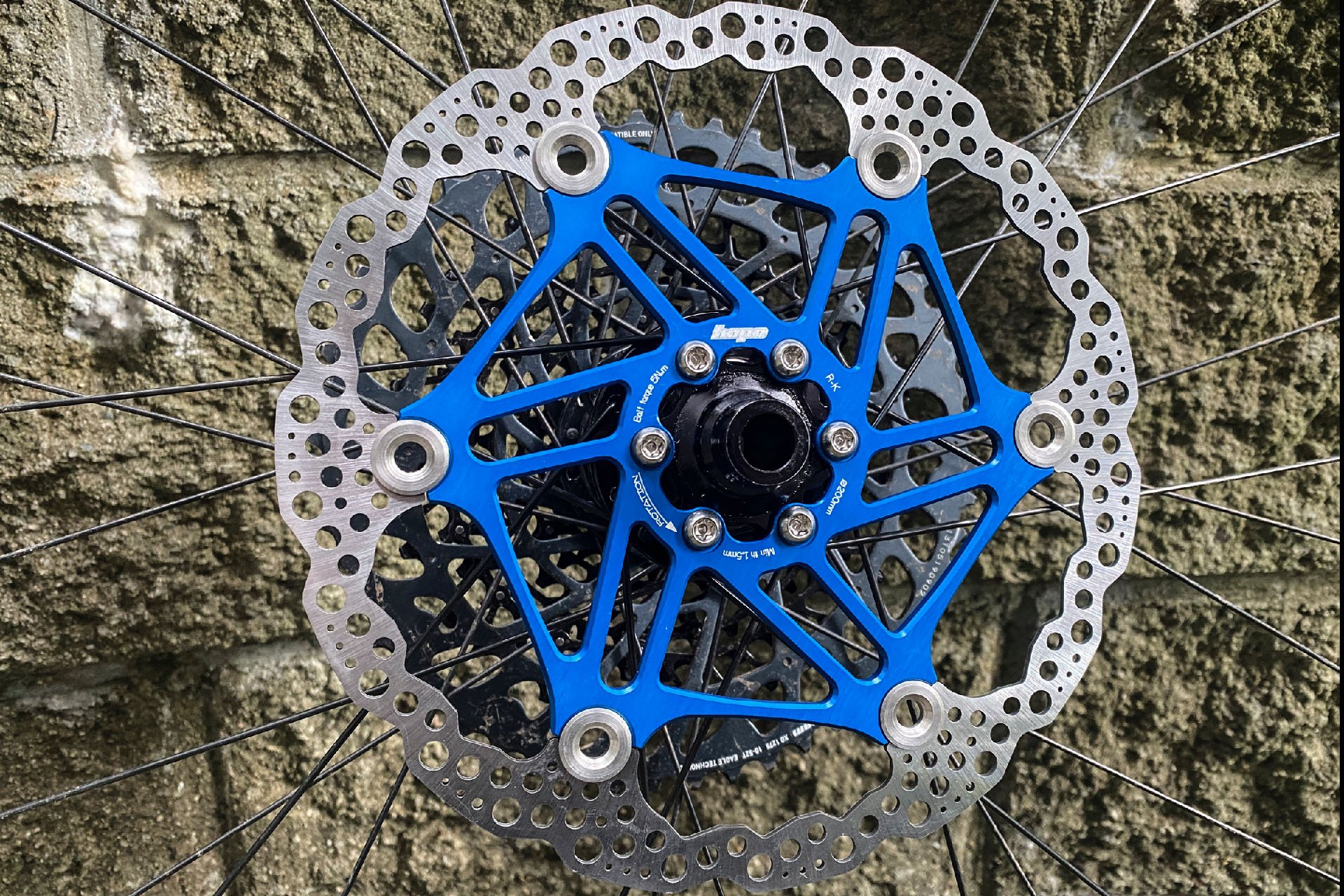
The aluminum spider likely saves a little weight and adds some stiffness, but I hate the idea of disposing of it once the rotors are worn out or too bent to be salvaged. Photos - Cam McRae
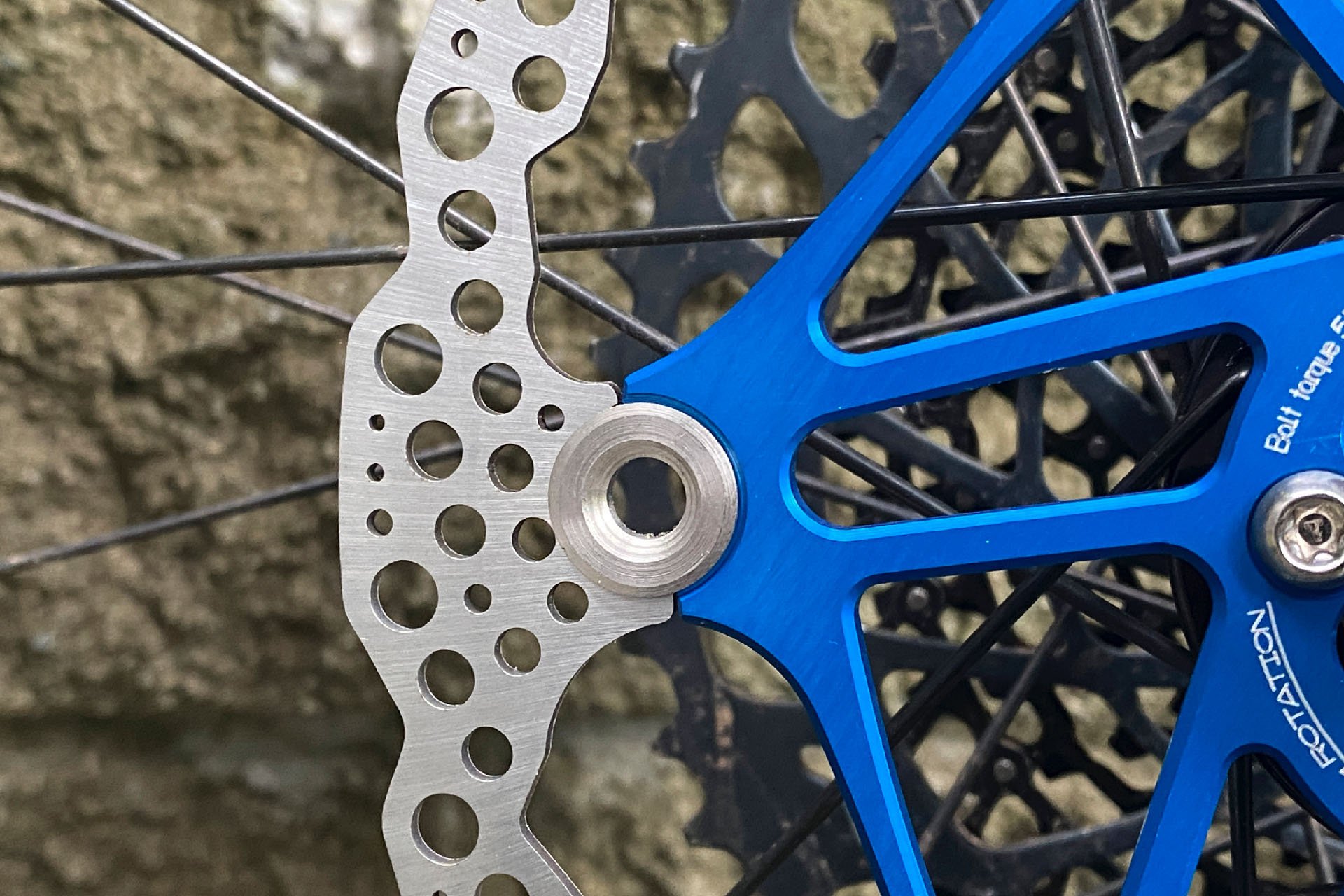
Unlike some riveted rotors, these don't rattle at all and they run absolutely silently.
Lever Feel
This is an interesting one because there are times when lever feel and performance are decoupled. Brakes with really good modulation can often feel a little less distinct when you squeeze them off the trail. Conversely, brakes that contact the rotor with a satisfying thud can belong to the on/off category. I also find that brakes with a solid return spring, (more on that below) that clacks the lever back when released, feel excellent in the garage, but it's important to know that every time you engage the lever, you are pulling against that spring in addition to moving the pistons, adding fatigue and reducing control. Which means the important elements of lever feel can only be evaluated on the trail.
Handling Heat
If you've ever experienced brakes that slowly lose power into a long run, and then go right to the bar when you stop for a moment, requiring some time to recover, you know how important this can be. Unfortunately I don't have much data on monster descents for these brakes but even on rides in high summer, they felt as good towards the bottom of the hill as they did when I was rolling in.
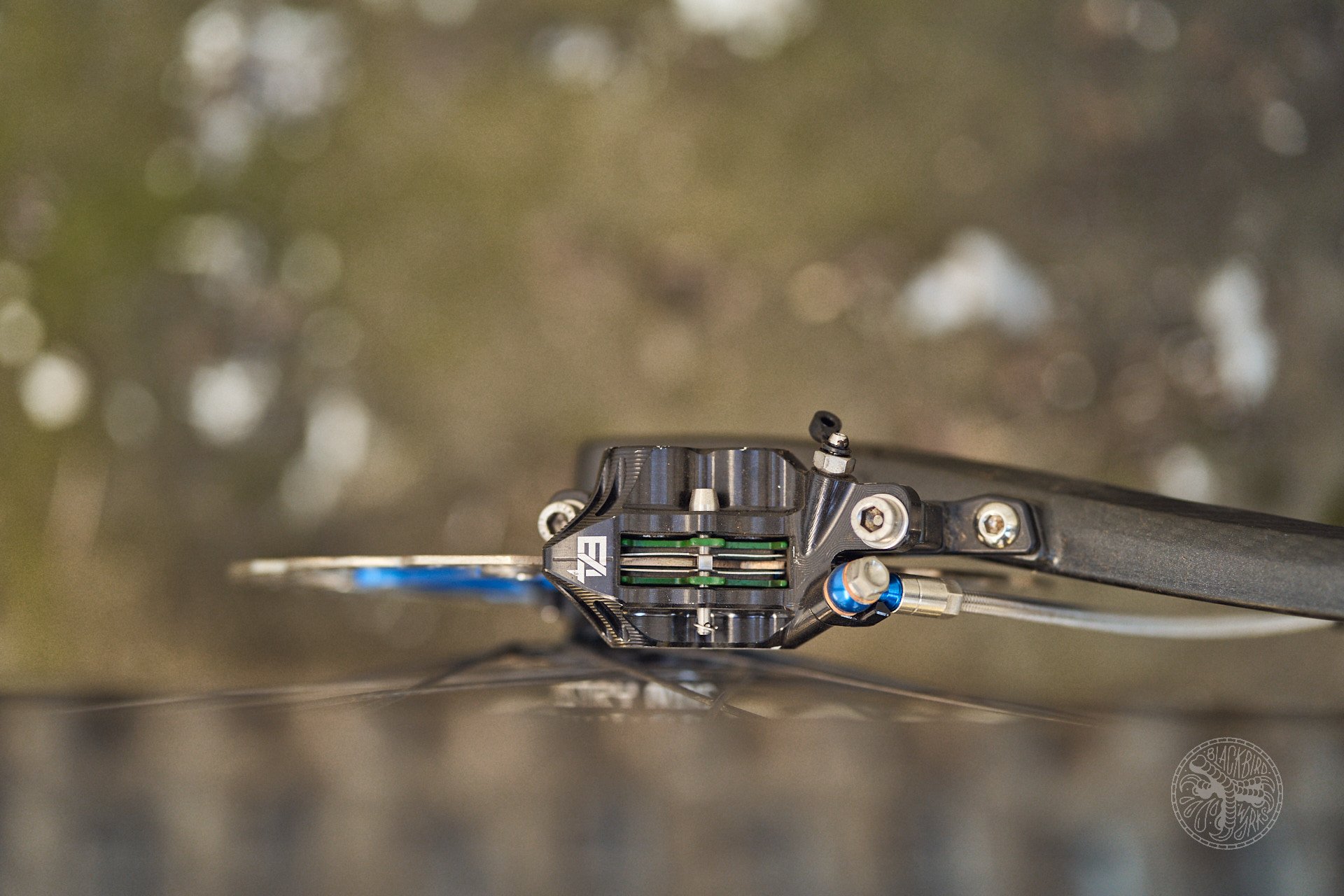
The green 'race' pads compare favourably to my current favourite aftermarket pads; MTX red compound. So far I'd say the Hopes are actually a little quieter in a wider range of conditions, like snow and rain. Someone I'm riding with often comments on how quiet my brakes are while everyone else is howling, and the power and modulation, as I will be mentioning ad nauseam, are excellent. I have some MTXs for these and will compare the two once these are worn out.
Tech 4 E4
I'm not sure what the second 4 means in Hope nomenclature, but the first one tells us this is the 4th model of this brake. Updates from the Tech 3 E4 include:
- New hybrid phenolic/stainless steel pistons for longer service life without sacrificing heat dissipation properties
- All-new internal sealing and roller bearings at the lever pivot for reduced friction, alowing for a lower-rate return spring
- Hinged bar clamp for the first time
- Improved mounting for SRAM controls, apparently with more adjustability than previously (there are Shimano mounts for as well)
- E4s come stock with Hope's new green "Race" pad compound which is faster wearing but more powerful and resistant to heat than Hope's other pads. (I can attest to the power but I'm not sure about the pads' lower-rated wet weather performance, which I found excellent)
- The Tech 4 E4 is said to generate 30% more power than the Tech 3 and has a new, more ergonomic, lever design.
The caliper is machined from a single piece of billet which should make it very stiff, potentially improving power transmission from hand to rotor. These are the first Hopes I've used so I can't compare them to any previous generations.
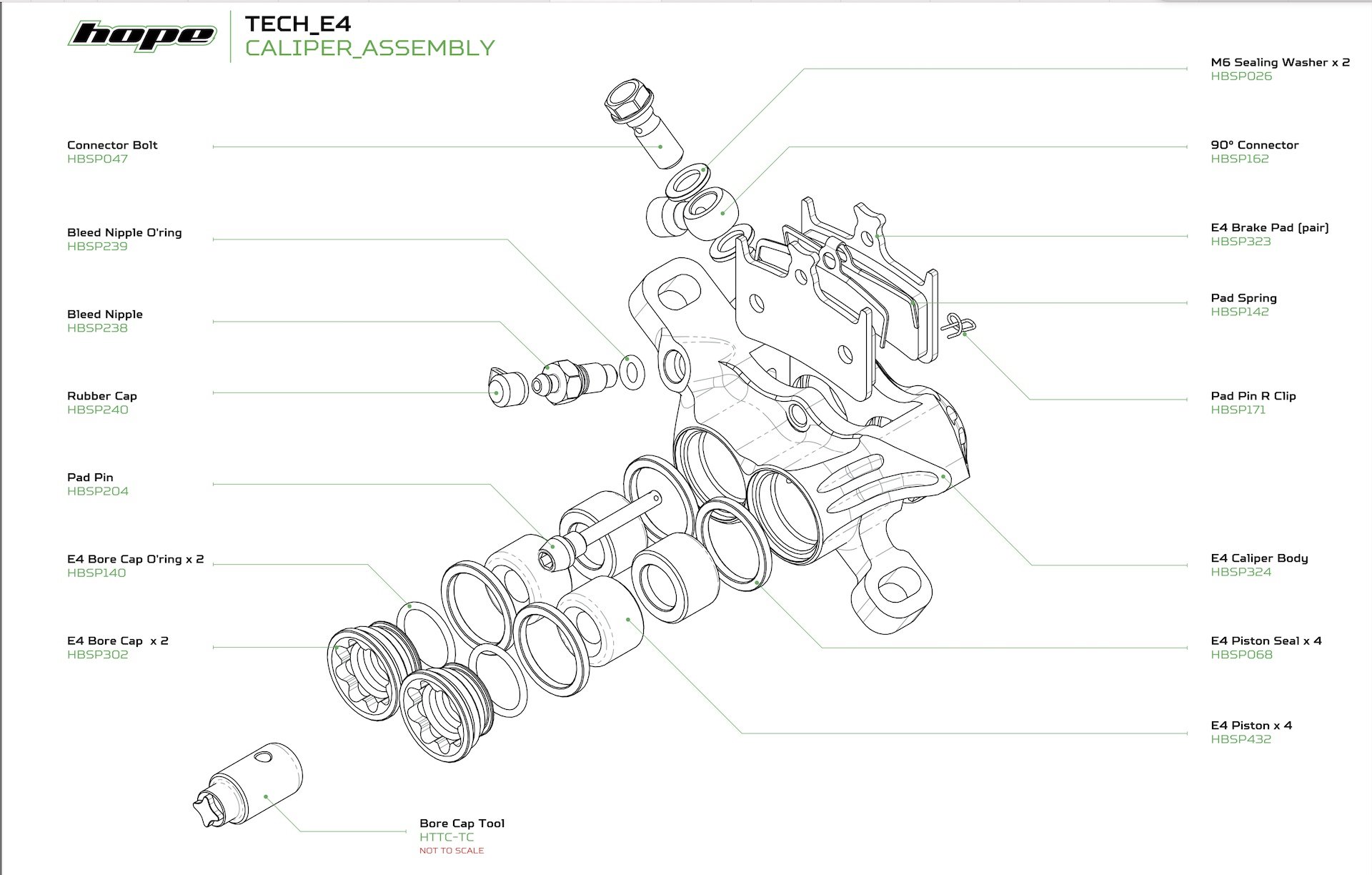
If you'd like to nerd out...
A Word about Braided Lines
The first time I realized I was able to purchase braided stainless steel cable-housing, back in the early 2000s I think, I used them at every opportunity I had for several years. In the early days of discs, it was far too easy to crimp, fold, crush, or break mountain bike brake lines during a ride. Spurting DOT 5.1 or mineral oil all over the trail, and your bike, wasn't an unusual occurrence, particularly considering all the crashing we did. Over the bars was a particularly efficient method of ripping a brake line out of a lever. The shiny stainless wrapped hoses seemed indestructible in comparison. I don't recall seeing one damaged and I didn't manage to personally either.
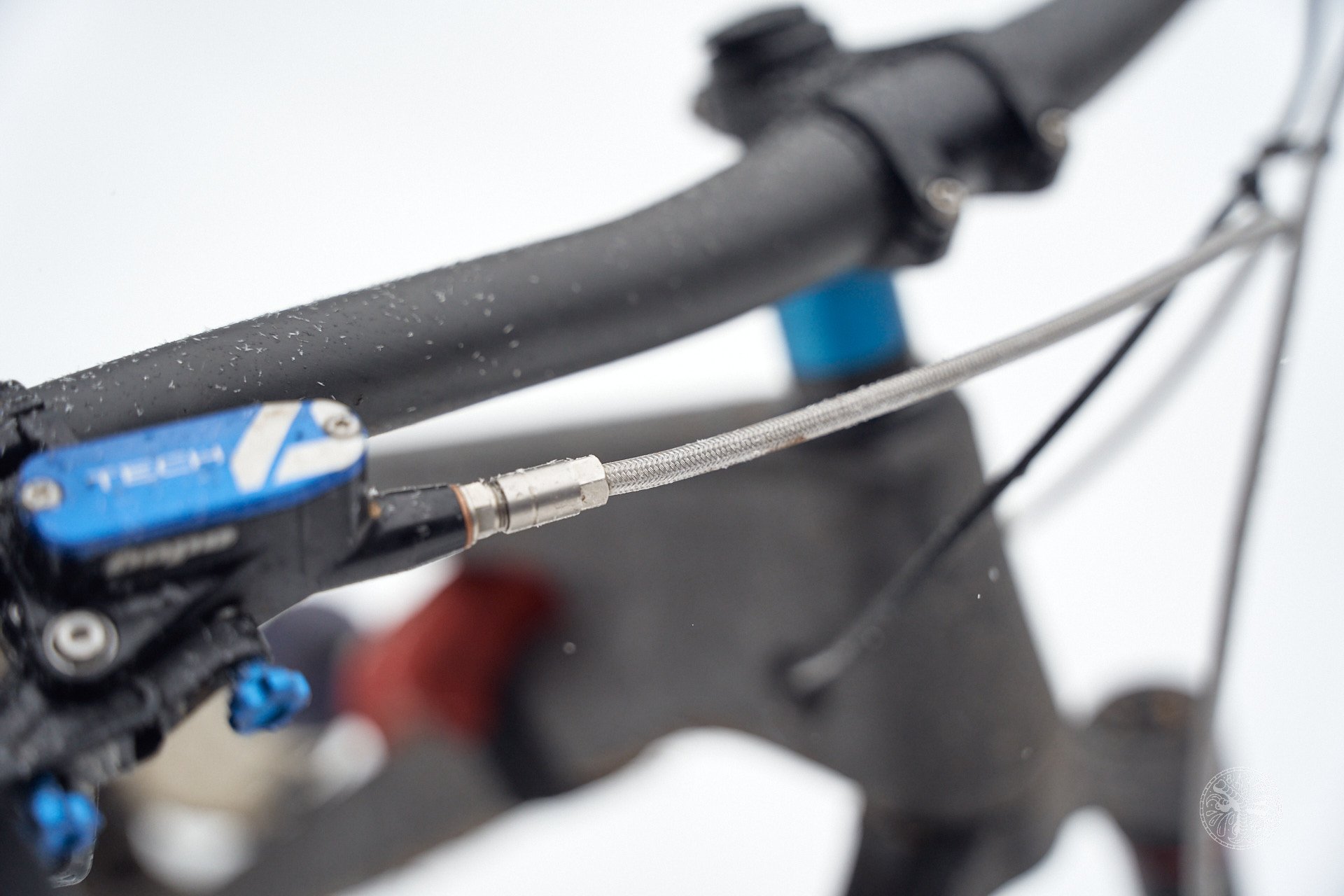
I chose to try braided lines because they are less common currently. I believe these are made by Goodridge, just like back then. These were essential in the early Hayes Mag era but MTB brake lines have come miles since then, undermining the only practical advantage of the stainless steel sheath
I can't remember the last time I was on a ride when anyone in the group compromised a brake line. It has to be well over ten years. There may be exceptions, but the hose I have used in recent years, by most brake manufacturers, has been bombproof. I'm sure it can break, like everything else, but it's not easy to do. It's possible the braided versions are much stronger, but if that's the case, it doesn't seem necessary.
This means you better be buying these for aesthetic reasons because they are more of a pain to cut, (the braided outer needs to be trimmed with an exacto knife to mate the housing with fittings), they don't hang as well because they aren't uniformly flexible, and they cost more money. I also think, for this build, black would look better, but I wasn't too worried about that, as you can tell by my over-spacered stem.
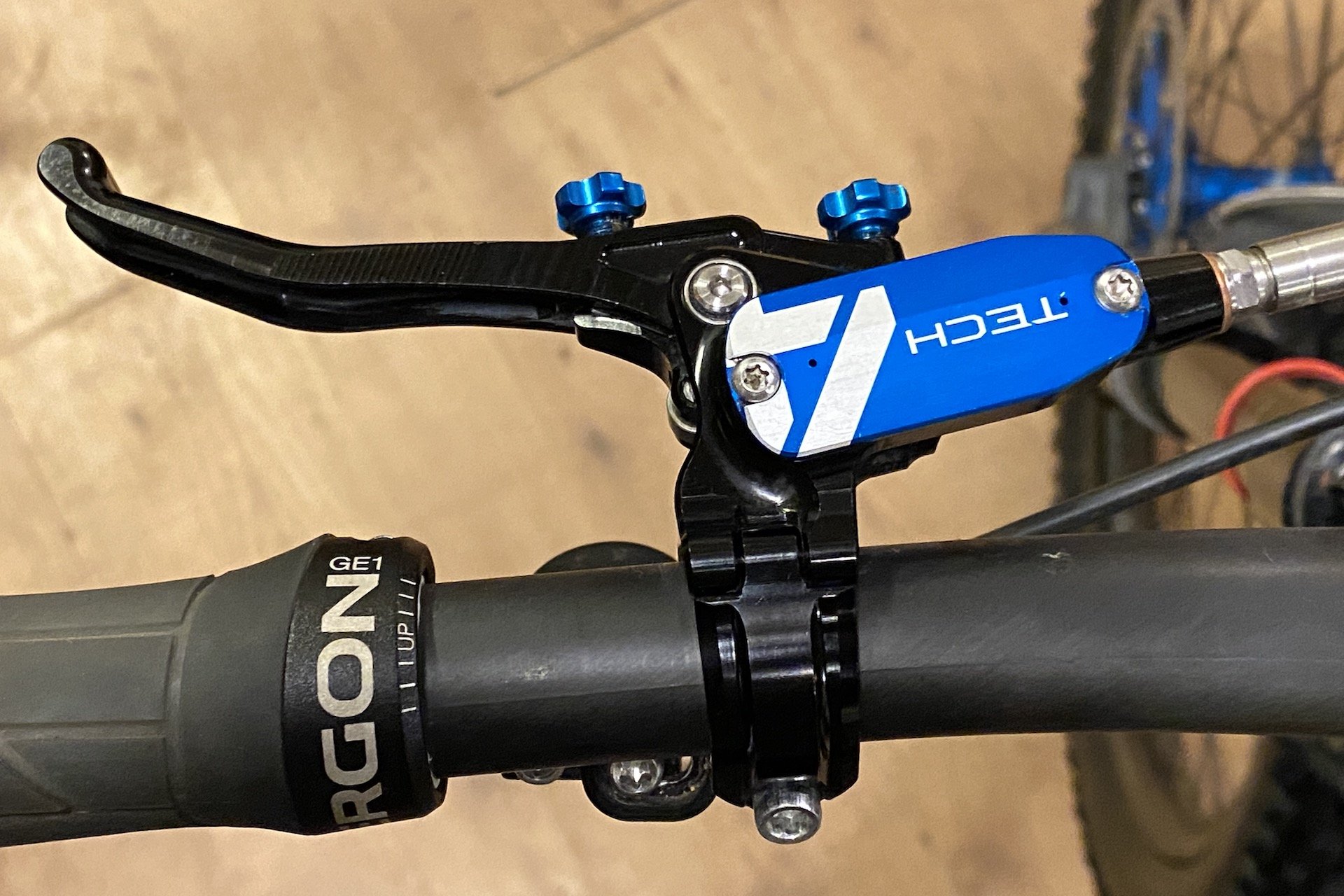
The lever as seen from the cockpit. These cannot be swapped right to left without a bleed like SRAM Codes because the master cylinder should be facing upright. Photo - CM
The Levers
There are two easily manipulated adjusting knobs in the front of the levers. One is labelled as 'BPC', which I assume means bite point control, and the other simply says reach. The BPC reduces or increases the lever throw, which also moves the levers starting point, and the reach moves the starting point of the lever in or out without changing the throw. This should be done in sequence with BPC first because it also changes the lever's starting point.
I had no trouble finding an ideal position for my hands with these adjustments and the lever is machined with dimples on the face of the blade for added grip. I worry a little about the exposure of the knobs, which could become damaged in the event of a crash but there have been no problems thus far.
The light action, thanks to the softer return spring and redesigned internals, is the most impressive feature here, allowing force to be generated at the rotor with very little effort from my digits.
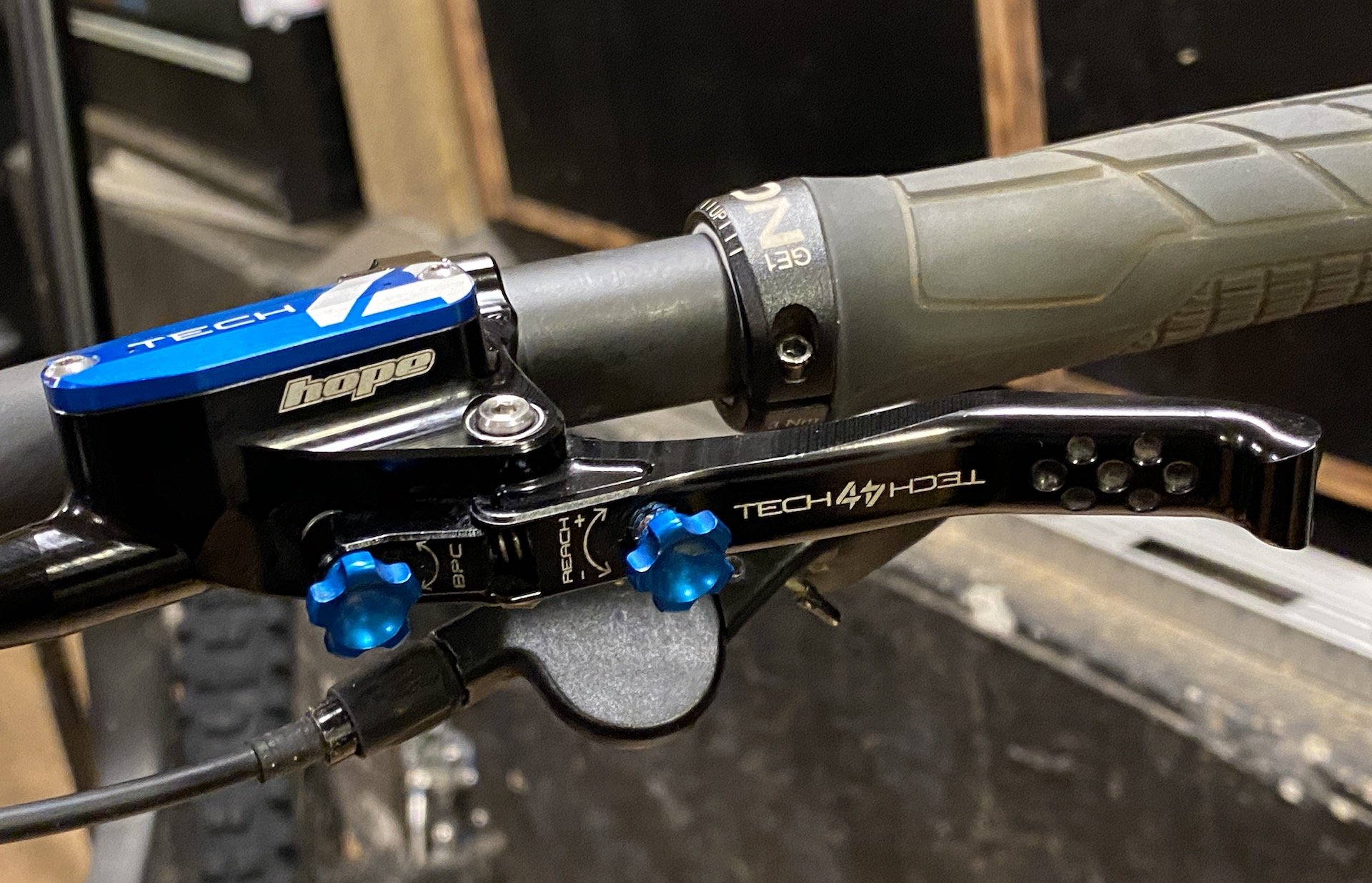
The lever has dimples on the flat section of the blade for added grip (it appears there are ridges in the hook in this photo but that is just a reflection). The knobs for bite point and reach are easily adjusted with gloves on. Photo - CM
On The Trail
As any F1 racer will tell you, good brakes help you go fast. You don't need to plan nearly as far ahead, because braking distances shorten, and later and more compact braking, lowers lap times. When you are sure you can throw down an anchor and stay in complete control, the stress stays lower as you hurtle into a corner or any blind situation.
I'm not as interested in speed, but these benefits translate well to North Shore riding. Sniper braking points are common, on interrupted rock faces, after launches or gaps, or during steep chutes requiring direction changes mid way. These brakes take much of the guess work out of these moves because I can confidently look down and realize I'll be able to rein things in with little more than a bike length of space.
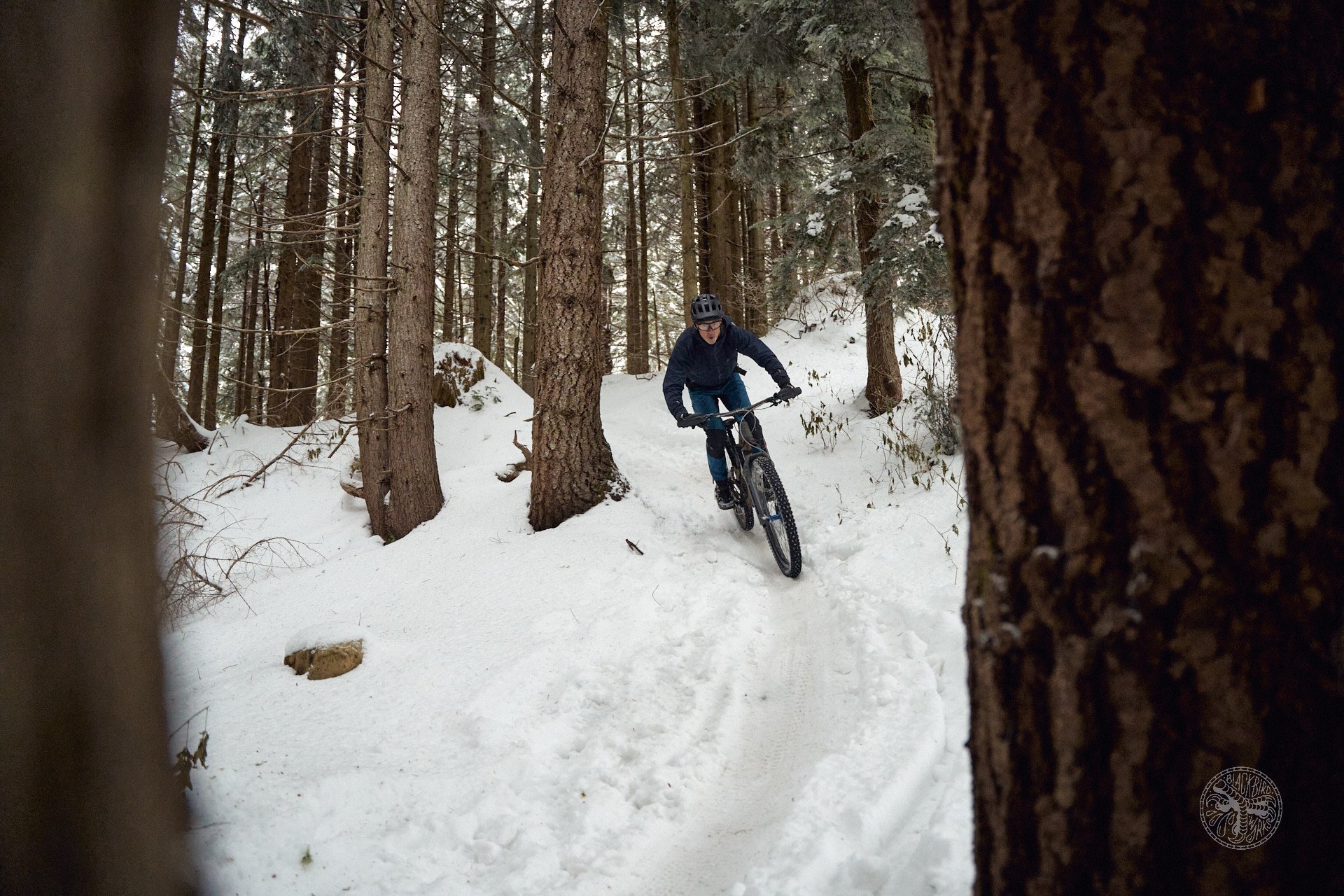
This was a great day for testing modulation. There was good grip on the top layer but it was slick underneath making for an incredible drifty good time. These were such spectacular and rare riding conditions that there was a little remorse beneath my smile, because I knew they may never come again.
Despite the 200 mm rotor, I haven't yet been in a situation where I wanted more power from the E4s. There is gobs of clamping force that is easily controlled. It seems to me the credits need to be divided between the pumping mechanism, the incredibly light lever feel and low clamping force required from your hands, and the excellent pads.
For me however, the biggest star of the show is the modulation. Modulation is most noticeable at slow speeds, where poor brakes often reveal their flaws, but these brakes continue to allow for minute adjustments in lever force deep into the power stroke.
On a couple of moves on my most recent ride, with my buddy Mike in front of me, he let his rear wheel slip down a couple of short rock faces and on some other short steep sections. In many cases a little rear wheel slip isn't a big deal, as long as you are able to slow adequately, and often times it's kind of fun. In these instances however I consciously tried to prevent my rear wheel from losing traction and to my surprise, it was easy. In fact I could keep Mike's speed, riding silently without any wheel slip, or go a little slower if I chose.
On top of these other benefits, the reduction in hand fatigue is easily noticeable because so little force is needed from your fingers. This further aids modulation because tired hands aren't good at sensitivity.
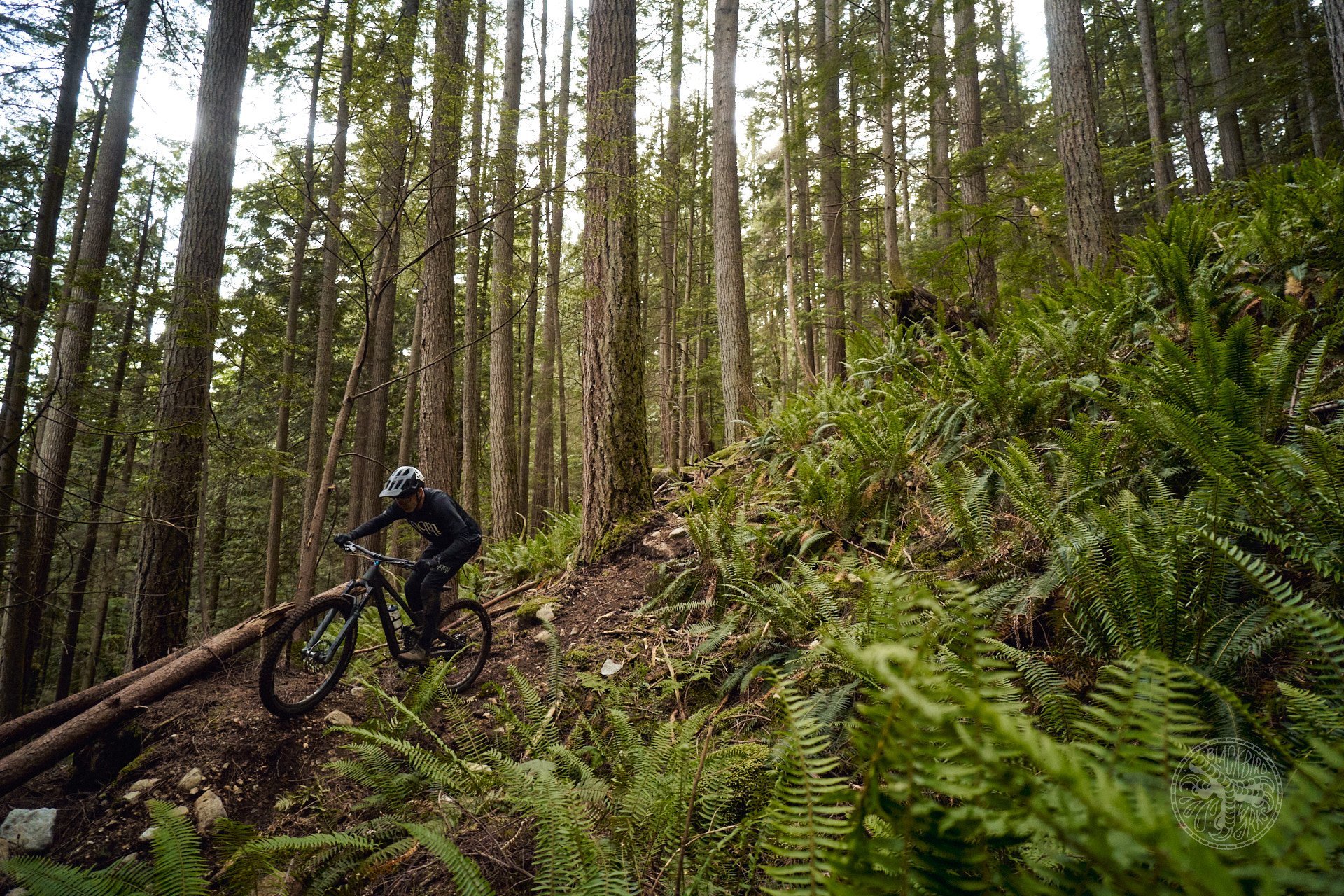
I have really enjoyed recent SRAM Code RSC brakes and could happily use them forever (in use here), but the Hope E4s have the edge in power, modulation, lever feel, hand fatigue, and particularly brake pad compound, although that can be addressed with aftermarket pads like those from MTX.
Bleeding
I was sent Hope's Easy Bleed tool ($45 here in Canada) which has a reservoir, like a Shimano bleed kit, as well as an alternate master cylinder cap which the reservoir threads into. Once that's in place you simply unscrew the reach and contact adjustments so they are all the way out, fasten the handlebar to the top tube in the direction of the lever you are bleeding, and alternately add fluid and pump the lever. After that you need to alternate between pumping the lever and opening the lower valve to allow air to escape. Continue doing this until the lever feels firm. You can also expose the pistons on one side of the caliper, by squeezing the lever and putting pressure on the other side with some non-marking tool, and then carefully push the pistons back in while opening the valve to allow more bubbles to escape.
The bleed can also be carried out without the kit as long as you source an appropriate section of hose to act as the "waste pipe" in Hope's words. If you do it this way you'll need to have the master cylinder open and be aware of the fluid level, adding a little as you go so as not to draw air into the system. If you bleed your own brakes a single use will pay for the bleed kit so it's a good investment. Since I first installed these in early summer, the action hasn't changed at all and Hope recommends a once yearly bleed.
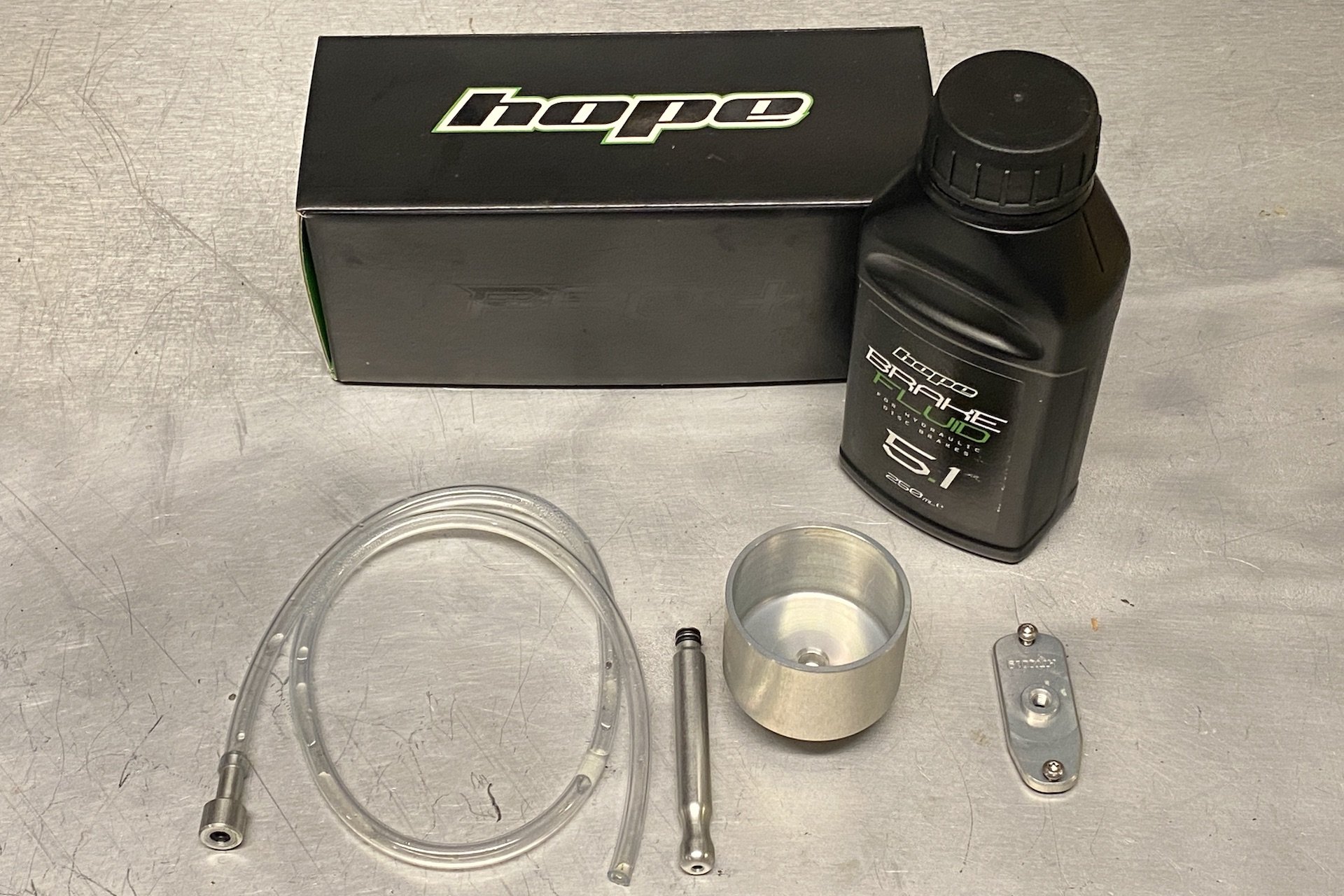
The Hope Easy Bleed kit includes an alternate reservoir cap, a drain hose, Dot 5.1 fluid, and a thread in cup with a stopper.
Interview: Hope Design Engineer Sam Gibbs
I had some questions for Hope so I thought I'd add them to this review. Hope Design Engineer Sam Gibbs was gracious enough to answer my questions.
Can you please tell me how Hope's take on the importance of power vs. modulation, and the relationship between the two, influences the brakes you produce?
Sam Gibbs - They are both important, you will have problems if you prioritise one while forgetting the other. Obviously if your brake is very under powered this will increase the effort needed every time you use the brake and lead to a lot more fatigue. Our aim with the Tech 4 was to increase the power output of the brake while maintaining or improving the modulation offered by the Tech 3 brake. Basically we wanted to have our cake and eat it!
Aside from being produced in Barnoldswick, can you tell me how Hope brakes differ from the big brands?I think we have far fewer compromises to make compared to a larger brand.
We don’t supply OE so we don’t have the same price pressures, we can choose the best manufacturing method, hold tighter tolerances, use better materials. The end result is something different to what larger brands can offer both in design, aesthetics and performance.
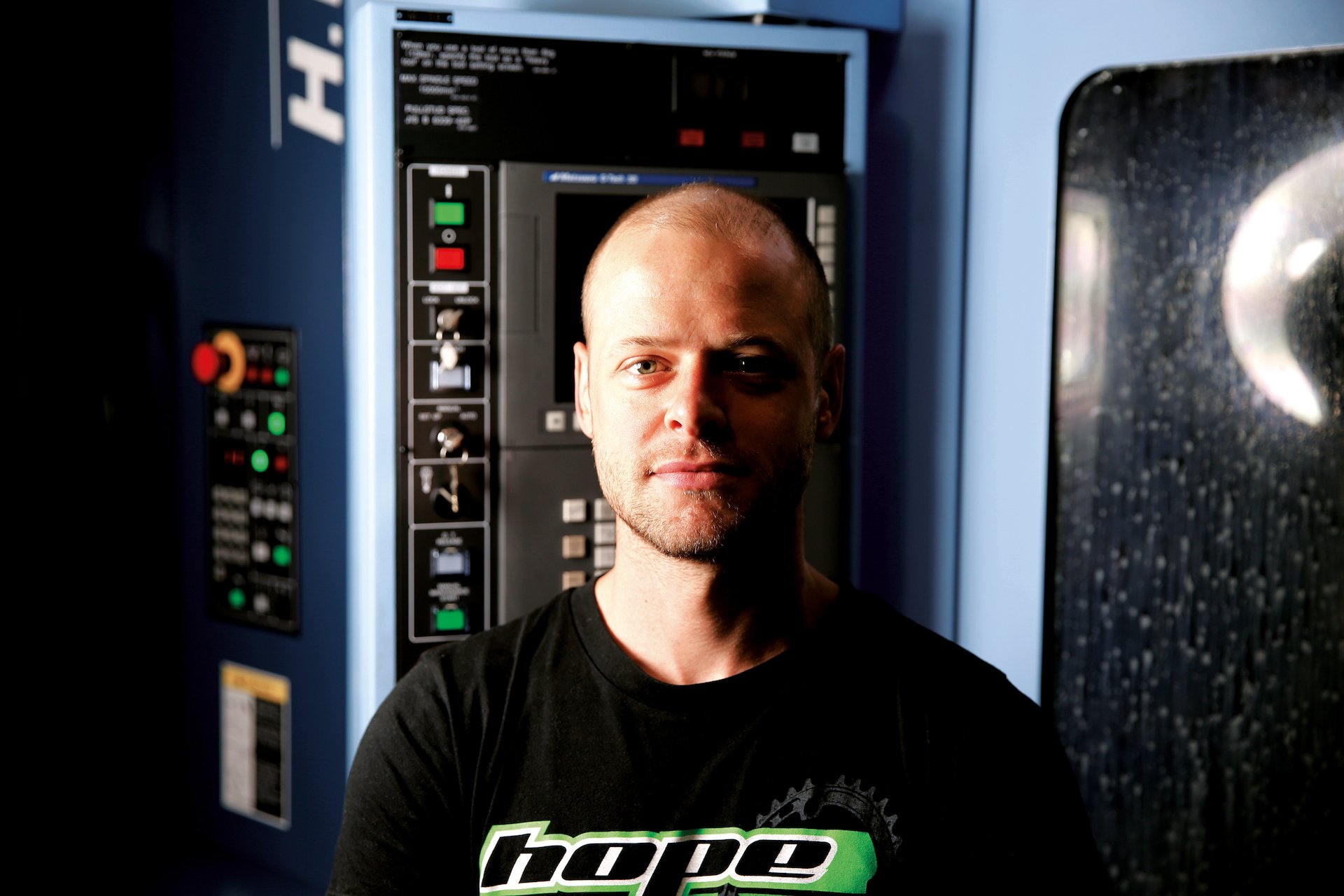
Design Engineer Sam Gibbs in the factory where Hope Components are made, in Barnoldswick, England. The town is also home to a Rolls Royce factory.
One of the first things I noticed about the Tech 4 E4 brakes was the return spring. It feels lighter than other brakes I've used. I actually wondered if my bleed was inadequate at first. I've always liked the feel of a strong return spring - at least in the workshop - but I realize that positive feeling would come at a cost to your hands since you are pulling against that spring every time.
Yes the return spring has a lower spring rate than our Tech 3 brake. The spring force directly resists the force applied by your hand so lowering this force will reduce hand fatigue and give more control to your braking. Reducing friction in the pivot and internal piston has allowed us to go for a lighter spring.
I'm very impressed with the racing compound pads. They have been almost entirely silent even in snow, slush, and cold rain. Power and feel are similarly impressive. Can you tell me about the compound and what the goals were for these pads?
The racing green pads are an organic compound pad. The main goal with these pads was to have high friction co-efficient, especially at low temperatures. A lot of riding situations don’t generate a lot of heat in the braking system and it’s one area we felt our existing pad compounds options could be improved. In the end we ended up with a compound that gives us excellent friction properties right across the full range of temperatures and pressures. The only real downside to these pads is the durability.
The set I'm testing came with braided hose. I assume these are more durable and resistant to crimping or other damage? Are there other advantages to the braided lines?
Yes, the advantage to braided hose is it’s resistance to damage. It used to be the case that braided lines flexed less under pressure but standard hose has improved greatly in that respect so there is little benefit there now. Also internally routed cables mean brake lines are less likely to get damaged so the benefits are reduced further.
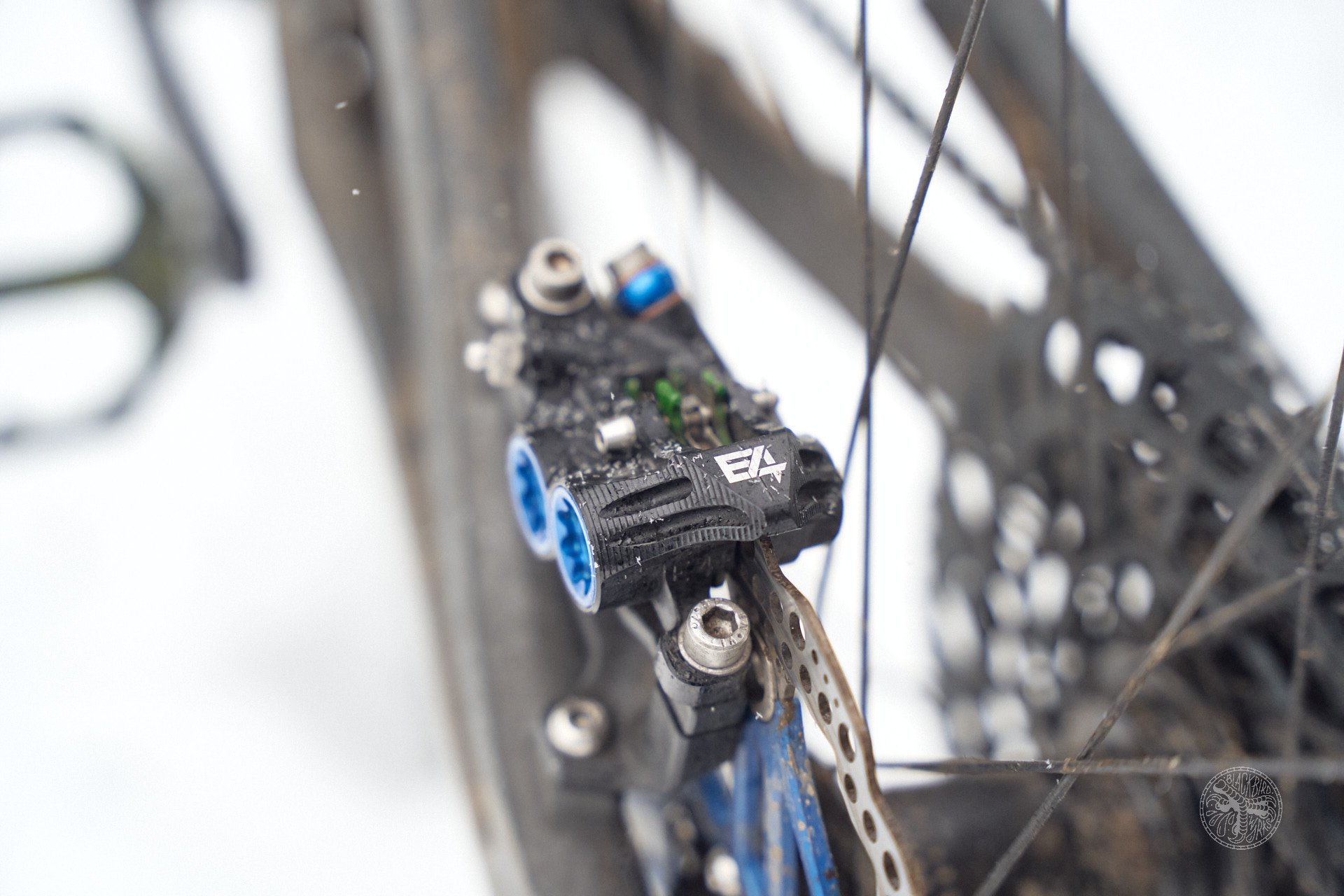
The one-piece caliper body is a marvel.
Your literature notes a hybrid stainless steel piston with a phenolic insert. Low friction, heat reistance and durability seem to be the goals with this design. Was this difficult to implement? How much better are the new pistons over those in the Tech 3?
The Tech 3 caliper pistons were entirely made from phenolic resin. This is great for managing heat as the phenolic is a great insulator. The problem with phenolic pistons is they tend to become dry over time so need to be lubricated to prevent excess piston retraction. The stainless pistons help with this, they need less maintenance, and we need the phenolic insert to help manage the heat. We now have 2 parts to make so they are more expensive to make, I wouldn’t say there is a major performance benefit here over a well maintained Tech 3 piston, the Tech 4 pistons give more consistent braking performance over a longer period of time.
Can you tell me about the differences riders would feel between the V4 and the E4 (how much difference in power etc.) and how the products' design,like the influences these differences?
The V4 brakes are significantly more powerful, (more than 10%) but compromise a little on weight. The E4 brakes are lighter and smaller packaged which may be a consideration on some frames and forks depending on what rotor size you want to run. You will also notice a slightly firmer lever feel on the E4 due to the smaller brake ratio, which may be desirable depending on personal preferences. The softer bite point on the V4 brake helps modulate the extra power.
Scott from NRG didn't think I would need 220 mm rotors considering how powerful these brakes are and he was correct. Can you tell me if you have tested how much difference there is? Do larger rotors also provide better modulation?
Theoretically going from a 200mm rotor to a 220mm rotor will give you 10% more power. In reality there are many other variables which make it hard to put an exact figure on it. I can’t say we have ever directly tested it and I don’t think we would be able to give a reliable figure if we did. I wouldn’t say modulation would improve or worsen but you will need to recalibrate your lever inputs to account for the increase in power.
Aside from bleeding and checking/replacing pads, what sort of maintenance do you recommend for your brakes?
We recommend checking your braking system before every ride. Check operation, visually check for any damage or leaks and make sure bolts are tightened. Check brake discs are straight and check for signs of overheating. Our brakes generally don’t need bleeding more than once a year, as pads wear it’s quite usual for caliper pistons to need re-adjusting to make sure they are centred and all pushing an equal amount on the disc, the disc shouldn’t be getting bent to one side when the brake is applied. Whenever pads are changed we recommend cleaning, lubricating and re-centring the caliper pistons. There are video guides for all of this on our website.
From your perspective what is the most impressive element of the Tech 4 E4 in terms of either manufacturing, design or performance?
Ultimately it’s all about the performance of the brake, this is a function of the way the brake has been designed and manufactured. The Tech 4 brake offers high power that is consistent and easy/intuitive to use thanks to great modulation and lever feel.
Thanks Sam!
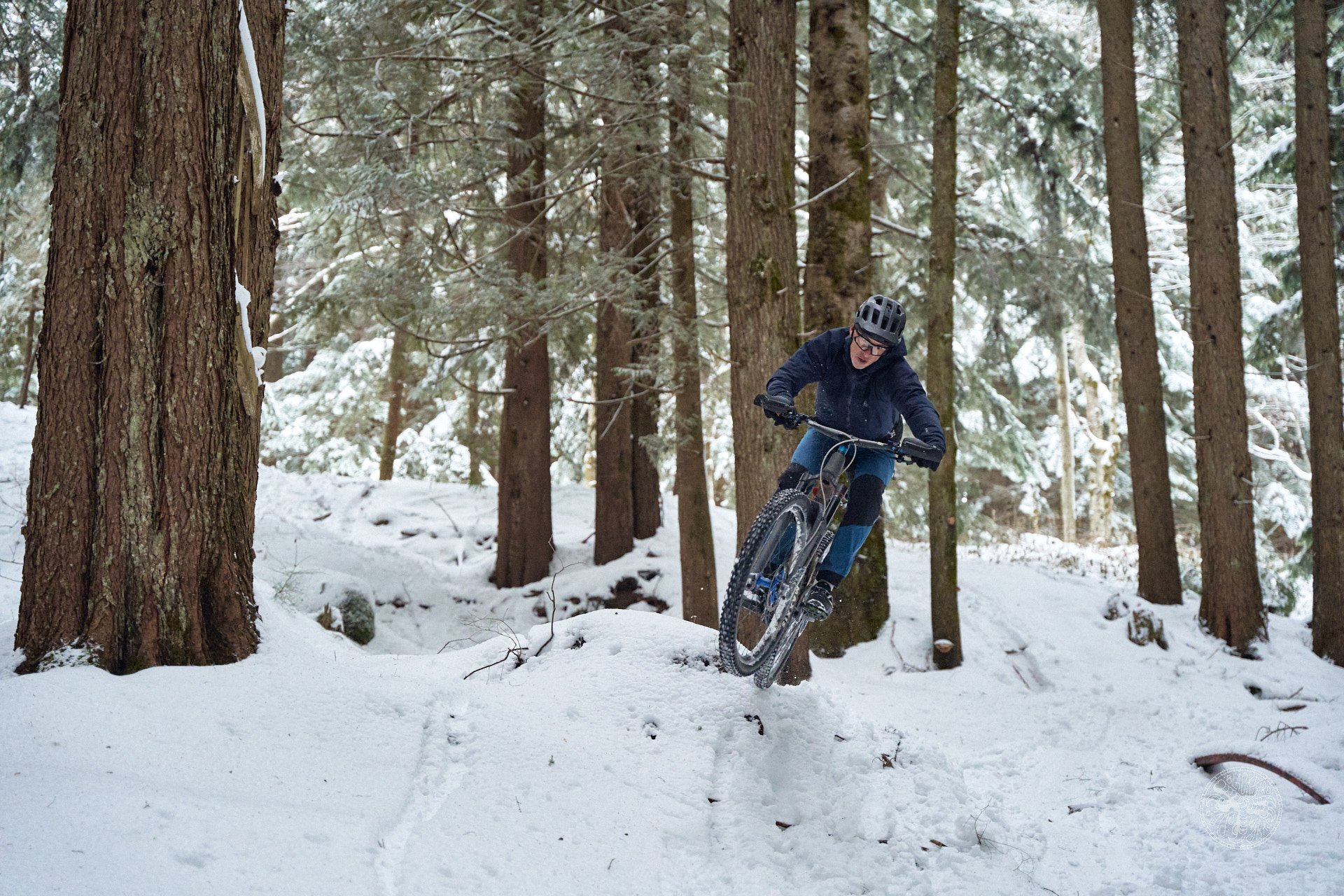
There was non-stop giggling on this stellar snow day, just before Xmas.
Downsides?
I'm looking for scraps here because these brakes have been so good. The inability to swap from Moto/euro lever orientation without a bleed will be a negative for some people, but most brakes have that issue aside from SRAM. About the only niggle I have found is that, currently at least, the clearance between pads and rotor is very tight and I've recently struggled to have them aligned without any rubbing. I haven't yet tried resetting the pistons with the master cylinder open so excess fluid is pushed out (the alternate cover and bleed cup should make this process simple) and that may give me more clearance. I will update this article once I've done that. Otherwise these have been the brakes I've been looking for.
In Conclusion
In the last four months it seems I've been making riding comebacks monthly and every return feels a little shakier than the last. Having a well-tuned bike has helped me get rolling again (I've had lots of time for bike work) but I think the Tech 4 E4s have made the biggest difference to my confidence. These Hope brakes have changed the way I evaluate moves, because I feel so confident about my ability to control my speed in virtually every situation I've encountered. This has made my re-entries much less bumpy than usual.
Every element required for the riding I do, including the power, modulation, lever action, adjustability and construction, is at the top of the heap.
I could rave on, but in short, these are the best brakes I have used to date.
Hope Tech 4 E4 Brakes - 380 - 400 CAD / 220-280 USD / 175-220 UK£ / 220-275 EU
Height - 6'/183cm (mostly legs)
Weight - 170lbs/77kg
Inseam - 33"/84cm
Ape Index - 0.986
Age - 58
Trail I've been stoked on lately - Sam's Dad's Trail
Bar Width - 760mm
Preferred Reach - 485-500mm (longer with 27.5 wheels than 29)
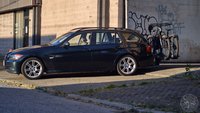
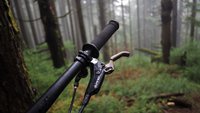
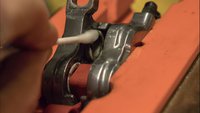
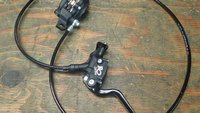
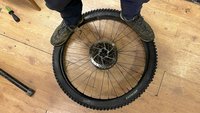
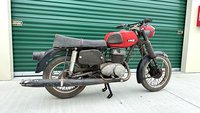
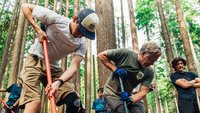
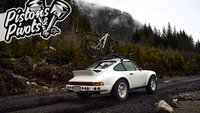
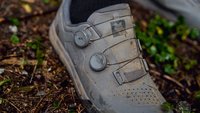

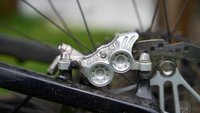
Comments
Tadpoledancer
1 year, 3 months ago
I’ve got a set of Tech 4 V4s and I really love them. Perfect compromise between power and modulation, and they look like jewellery.
But there is something weird about the callipers and centre lock hubs. I’ve had the same issue as you with being unable to centre the calliper over the rotor when running I9 Hydras with centre lock SRAM hs2 200mm discs. Weirdly it was only an issue on the rear hub. Contacted Hope, and they claimed my hubs were “out of spec” which I really doubt, especially when I read of others with a similar issue. Never had the same problem with other manufacturers, and I’ve run the same wheelset with other brakes.
I must admit that I just kept running the brakes aligned, but uncentered, and it seems to be all good, but I don’t know if I’m doing something stupid?
Reply
Cam McRae
1 year, 3 months ago
My front hub was so far off it was impossible to mount them without the rotor pressing hard against the outboard brake pad. It seems unlikely that Shimano XTR hubs would be out of spec.
Reply
Tadpoledancer
1 year, 3 months ago
The Hope support guy who answered me suggested getting some “in spec” hope hubs. Would it be cynical of me to think that they make the callipers slightly different than the industry standard (if there is such a thing) to make people buy their stuff?
Reply
Briain
1 year, 3 months ago
I tried using hope floating discs with sram codes and the caliper touches the floating pin on the disc so I think they have strange clearances on their brake products
Reply
Sandy James Oates
1 year, 3 months ago
I have recently upgraded my R.M. Powerplay Hope brakes from the Tech3 V4’s to the Hope Tech4 V4’s, new Hope discs. I have Hope pro 4 hubs and all four calipers never seem to get centered on the disc. I align the calipers on the discs by loosening the caliper hold down bolts, pull the lever on the master cylinder and retighten the caliper hold down bolts. No pad to disc rubbing.
Reply
Andy Eunson
1 year, 3 months ago
A while back I had a set of Tech X2 brakes. Not strong enough for north shore use but that was my mistake. But their rotor didn’t mesh with my Easton hubs without filling some material off the rotor and the rotor also rubbed the post mount on the fork a bit when things flexed. One would think that brake standards for mounting rotors and callipers would be pretty consistent now. These things should not have compatibly issues.
A lot of modulation comes from pad compound according to my experience with using MTXRed pads in my brakes. Modulation also comes a lot from the riders fingers. Some brakes have great modulation at the expense of power. The Guide brakes that came on one of my bikes were an example of that. Those are gone replaced with XT four piston brakes.
I would totally get a set of these Hope brakes based on this review.
Reply
Blain Echols
1 year, 3 months ago
Based largely on Andrew's review, I've become quite a fan of Curas (2 and 4) of late. I'd really be interested in comparisons to other brakes. For instance, based on a short demo ride I think the Curas feel a lot like TRP DH-R Evo but maybe with a bit more ultimate power (for the 4s).
I used Hope Mono-minis from circa 2010 for many many years with nearly zero maintenance save pads and the occasional bleed. I still have them, though they're no longer in use. Easy to bleed, too. I currently have RX4+ calipers on a (shimano) gravel bike. If it weren't for DOT fluid I'd probably have some Tech3s instead of Curas. The RX4 seems to prove they can make a brake work well with mineral oil. If not for the DOT fluid I'd probably have a couple sets of Tech3/Tech4s.
Reply
Cam McRae
1 year, 3 months ago
Blain, are you able to expand your feelings about DOT vs. mineral oil? Always a controversial topic.
Reply
Blain Echols
1 year, 3 months ago
Hah, sure, let me wade into the mud here ; ).
While I think there are some advantages to the hygroscopic nature of DOT (theoretically, at least), I've yet to have a problem with oil in MTB brakes. A lot of my preference comes down to standardization: I want a single bleed kit to do all the bikes and I'm invested in mineral oil. The other preference is mainly that it feels wasteful to toss/dispose of a bottle of DOT fluid after a bleed session, as I know it'll go bad on the shelf. And even if it doesn't, I can't prove that it's 'good'. My big jug of mineral oil, however, will be useable to the last drop (or at least it'll be very obvious if I get water in the jug).
Reply
Briain
1 year, 3 months ago
While I think it depends on climate you live in. I've been bleeding all brakes with a 5L container of dot fluid I bought nearly 10 years ago with out any issues cars, motos and bikes. I truly hate mineral oil because if you get a drop on a rotor its the end of your pads at least with shimano brakes can't speak to other brands brakes
Reply
DanL
1 year, 3 months ago
My experience is that DOT is easy to buy, easy use and easy to clean up. again, motorcycles made it something that I was certainly used to before I got to bicycles so I there's probably a different experience for anyone who started with Shimano or other mineral oil brakes and if they were experiencing leaky and poorly made DOT brakes, it would certainly colour the experience when dealing with spills and finding old drips onto other materials
I've not seen any of the supposed paint /surface damage that is constantly brought up though if it's cleaned with isopropyl in a timely manner, although, ok, a pissed off friend did write their thoughts onto the bonnet of their cheating boyfriend's car with it one evening. But practically, it was on there for 10 hours....
It's the same on any part of the planet and has no special proprietary blend that forces me to buy a ludicrously marked up fluid. It's an agreed upon standard and as such is good enough for every motor vehicle on the planet, so certainly good enough for a bicycle in the mechanical sense.
Reply
silverbansheebike
1 year, 3 months ago
wipe the pads and rotors down with white gas on a rag, then put the pads on a rag face up, pour a bit of white gas onto the pads, evaporate, and you're back in business.
Reply
Agleck7
1 year, 3 months ago
Fwiw Paul Aston is a big fan of the Curas but I believe says the hopes are better. Picky gentleman
Reply
Endur-Bro
1 year, 3 months ago
Well he said the Tech 4 V4s are better.
Reply
MTB_THETOWN
1 year, 3 months ago
I have DHR on my Spire and Cura 4 on my scout. Cura 4 are much more power and modulation, and 1/3 the price. Mtx pads improved DHRs enough to go back and forth without issue, but the Cura 4s are incredible.
Reply
Cam McRae
1 year, 3 months ago
DHR? TRP DH-R brakes?
Reply
Agleck7
11 months, 3 weeks ago
What MTX pads for the DHRs?
Reply
Cam McRae
11 months, 3 weeks ago
I've had great luck with the red compound but I know several riders who swear by the gold. They apparently last longer but I'm not sure if they are as quiet. Steve Vanderhoek uses them so the power must be there - assuming he uses his brakes sometimes...
Reply
Agleck7
11 months, 3 weeks ago
Thanks!
Reply
Lynx .
1 year, 3 months ago
I'd have to concur, my first "real" brakes were a set of Mono-Mini's in 2005, still have them, but not nearly the power I want, so reside on a small loaner bike. If it weren't for the fact that the Hope's are DOT based and not mineral, I would most likely have them as my main set for all the reasons you stated, plus DOT is much more horrible, carcinogenic etc than Mineral oil.
Reply
SilentG
10 months, 1 week ago
Late reply but it might be useful to someone else.
I have been using Cura 4 on all of my bikes for several years with a short detour here or there with Magura MT 5 I think.
I also have been using a set of Tech 4 V4 since the fall.
I still like my Cura brakes, they are low maintenance, easy to bleed and basically you just end up changing out pads eventually with good modulation and power (both on Formula and Galfer rotors).
As much as I like the Cura 4 I prefer the feel of the Tech 4 brakes and while the difference isn't night and day it is noticeable if I ride bike X with Cura 4 for a few rides and then flip over to bike Y with the Tech 4.
Mostly better modulation with the Hope set and that combined with the lower lever pressure means you end up feathering and modulating like a fool and don't really think about it which causes problems for a short time on the Cura set as they are a little more wooden in comparison to the Tech 4 but no slouches by any means.
You can't go wrong with either to be honest and while I have used multiple sets of Maguras going back to the Louise the MT sets are more finicky to center/keep from rubbing and while they are very good for modulation the lever feel of the Hopes and the Curas is better for me (YMMV of course).
Reply
Steelisideal
1 year, 3 months ago
Excellent review, and I agree whole-heartedly.
They are staggeringly good brakes. There is so much power but the way they deliver it is incredible. Plenty of modulation, and genuine one-finger stopping power. As a motorcyclist as well, these come much closer to a pair of serious motorbike brakes in terms of power, bleeding and design.
For me though it’s also about serviceability. Shimano (although I like the way they deliver the power) are out because they’re basically unrepairable. Magura out too, lever build quality looks horrible. Formula fine, but difficult to get bits for in the U.K. Doesn’t leave many options.
The fact that with the Hopes I can cut hoses, bleed brakes and change pistons and seals at home is key, as well as ordering parts from a factory that will still be making them in 10 years time.
The only downside is that I had to buy a second pair for my other bike. SRAM Guides really don’t cut it any more…
Reply
Guy-Charles Valois
1 year, 3 months ago
Excellent review, thanks!
Im curious to know how the E4 V4 would compare to MT7, particularly on power and modulation. I use MT7 and love them for their power and modulation, but I dont like the carbotecture master cylinder.
Reply
papa44
1 year, 3 months ago
I love my Hope e4s, Im a massive lump and these brakes make me feel like a ballerina. You can quote me on that hope.
Reply
Cam McRae
1 year, 3 months ago
LOL! Well said!
Reply
cheapondirt
1 year, 3 months ago
No faint praise! It's cool to see Hope making really smart upgrades to replace some older products lately; the new pedals also seem properly thought out.
Reply
Eric Van Sickle
1 year, 3 months ago
Agreed about the quality. I upgraded from T3 E4 to T4 V4 last summer after about 5 years on the T3. The lever action is the largest difference. Very smooth, easy to pull action.
The fact that the brakes are so easy to take apart and work on with parts available for years and years will always be the greatest upside of the brakes besides how well they just keep working.
Great article.
The video link for the brake bleed doesn’t go anywhere.
Reply
Cam McRae
1 year, 3 months ago
Thanks!
And that link has been updated. I couldn't find any bleed info on Hope's web site but there are descent instructions, without diagrams, that come with the kit.
Reply
DanL
1 year, 3 months ago
Nice review and great pictures - especially the hardware closeups...very, er, stimulating.
I really liked using Hayes Dominions which had good lever feedback, but I found that the Hopes were one better with build quality, lever feel/modulation and adjustability (plus they also use DOT). Once you accept that you're going to have to pay for some postal service from the UK, spares and tools are really easy to source which makes everything straightforwards for home mechanic work and Hope can still CNC parts forever - not to mention the free to use 3D printer plans on their website to print bleed blocks that isolate single pistons.
I think it there's probably an emotional bleedthrough from motorcycle riding when I use the Hopes, from the bleeding process to the plinking rotors after a good ride as well, which generates the same sense of contentment. I'm itching to try a set of T4s in E or V format for comparison as the T3V4s are excellent for me, so I'm all in on using something excellenterer.
Reply
Cam McRae
1 year, 3 months ago
Interesting that there are Moto parallels but I guess that's where a lot of mountain bike innovation comes from.
I thought the 3D printing plans were a great idea! I hope that spreads. Here's the link for anyone who is interested.
Hope Open Source Tools
Reply
dirtnapped
1 year, 3 months ago
The 4 in E4 refers to the number of pistons. The X2 = 2 piston, E or V4 = 4 piston, Mono/Moto 6 = 6 piston.
Reply
Cam McRae
1 year, 3 months ago
Thank you!
Reply
Michael Klein
1 year, 3 months ago
This comment has been removed.
Ride.DMC
1 year, 3 months ago
These are nice looking brakes, that's for sure. I am glad to hear they perform so well - I had a pair of Hope brakes way back (early 2000's) and they were hot garbage. In their defense I think they were designed around XC use at the time and I was using them on my "freeride" bike doing laps at Whistler Bike Park. I cannot emphasize how bad those brakes were for that application - but man were they nice looking.
Reply
Mammal
1 year, 3 months ago
Same here, and that same misguided bias is what's prevented me from trying Hope in the 2 decades since. I really should ditch that. They were the ones with a single cylindrical reservoir with a dial on top. Leaky, hot garbage. They looked great though.
Reply
4Runner1
1 year, 3 months ago
Same experience as you two. They got so hot so fast! Then they had zero power and the lever went to the bar.
Reply
Peter Leeds
1 year, 3 months ago
I have had every Hope brake for 25 years. C2s, Mono4, DH4, Mono6ti (which, ironically, I have had since new to no loss of anything. No replacement of master cylinders, o rings, or anything other than a brake bleed every year. Still run as new 15 years later). Now I have the E4 Tech and still no issues. By far the best brake made. Period. No contest. Yes....other brakes are more available or parts are easier to find but using CRC you can find ANY Hope part. And the build quality is par none. Full CNC machined. Given my history, I cannot see anything but Hope from here on in. And don't think the quality stops with the brakes. Their cranks (of which I use) are the best. And most everything they make. Expensive but worth it long term. NOTE: do not use the organic pads (green). Switch to the gold (sintered) for best long term use. Expect to replace a rotor (rear) about after 6 years depending on use. As Tina Turner has said: "Simply The Best".
Reply
DanL
1 year, 3 months ago
Another really great supplier of Hope parts/tools is Tarty Bikes in the UK.
Reply
Mike Wallace
1 year, 3 months ago
One huge advantage of Shimano and Sram brakes IMO is the self centering. Maguras are the most powerful brake I have used (haven’t tried Hopes) but they require regular manual centering. It takes time and can be quite finicky if the pads are new and the rotor isn’t perfect.
Reply
Cam McRae
1 year, 3 months ago
I find with SRAM, more often than not, I end up centering manually. It’s been too long for me to remember with Shimano.
Reply
Brad Nyenhuis
6 months, 2 weeks ago
What he said (the Shimano part). XTRs are just automatic in this regard - Loosen bolts/pull lever/tighten bolts.
I love my new Hopes; amazing power with surprising modulation, but the pad centering is, using your words, finicky. Finicky is a kind way of saying PITA.
Reply
roil
1 year, 3 months ago
Love the format of this review. Well done.
Reply
Cam McRae
1 year, 3 months ago
Thanks very much. A lot of the credit goes to Deniz behind the lens!
Reply
kcy4130
1 year, 3 months ago
I wonder if Sam Gibbs uses GibbsCAM to program the cncs?
Reply
Ryan Walters
1 year, 3 months ago
#machinstjokes
Reply
Jonathan Friesen
1 year, 3 months ago
Excellent review! Wondering if any of you Hope fans out there have experienced and constant high-pitched squeal in dry conditions. Pads are fine, lots of power and modulation, just always a squeal. I know there will always be some noise that you will get from brakes but my Tech 3 E4's have always had that.
Reply
Cam McRae
1 year, 3 months ago
It sounds like you need some of the new green compound pads or some MTX red compound. My experience was the opposite. I couldn't make them squeal if I tried.
Reply
Jonathan Friesen
1 year, 3 months ago
Right! Ok then, off to the bike shop I go! Thanks for the advice.
Reply
papa44
1 year, 3 months ago
Get the mtx red you will not be disappointed.
Reply
pedalhound
1 year, 3 months ago
Thanks for the review, they look amazing.
I would love to see a comparison/shootout between Hope, Magura, Formula, Shimano, Hayes, TRP and Trickstuff if you can get it...lol. All the top end brakes...using the same size rotors and pad compounds and see who comes out on top. I think a wrecking crew style of shootout would be interesting too...see how different people feel about them. Reviews like this are a PITA...and take forever...but very cool to see the end product!
Reply
dano91
11 months, 1 week ago
Just ordered a pair of V4’s after reading all the great reviews.
I’ve always been pretty happy with my code RSC’s but wanted to try something different.
Cam did you have a preference between the two difsupplied pads?
Reply
Cam McRae
11 months, 1 week ago
I've only used the green ones actually and I just replaced a set with a set of MTX Gold and it was a seamless swap.
Reply
Brad Nyenhuis
6 months, 2 weeks ago
I speced T4s on both mine and my wife's latest builds (E4 for her, V4 for me) with mixed results.
I've used XTRs on both of our bikes for the last 3-4 builds and always been very happy with them. A year ago, when I built our latest bikes, neither XTR or XT were available so, after reading many glowing reviews, I opted for the Hopes.
I absolutely love the V4s. They have all the power of XTRs with far greater modulation. Low speed feel (see steep switchbacks on marble-like jank) is way more better with the same toss-out-the-anchor brute strength. The fact that they're also drop dead gorgeous doesn't hurt either. Yeah, I'm a fan.
The fly in the ointment, as mentioned here, is that the pad centering is quite fussy. This is a real thing. It doesn't effect me as much because I have large hands and run my levers pretty far out. However Mrs Roxtar, who is tiny, runs her levers very close to the bar. I could never get the calipers adjusted perfect enough to keep them from rubbing. I finally had to put her back into XTRs (thankfully, now available).
One big problem is the method for centering the pads. With Shimano (as well as most others, I believe) you just loosen the bolts, clamp down on the lever, retighten the bolts, voila.
Simple.
The Hopes actually force you to visually center them on the rotor. Way less easy, especially on the front.
Reply
Please log in to leave a comment.